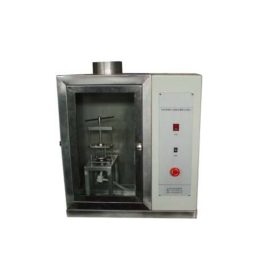
Protective clothing resistance to liquid static pressure tester
The acid proof clothing material anti-seepage acid static acid pressure tester is used to measure the anti-seepage acid and alkali resistance of breathable acid and alkali protective clothing materials - static acid pressure resistance and liquid static pressure resistance.
Applicable standards:
GB 24540-2009 Protective Clothing for Acid-base Chemicals Protective Clothing
Working principle:
The resistance encountered by the test solution passing through the fabric is expressed by the liquid static pressure it bears. Under an atmospheric pressure of 101.325kPa, the sample is subjected to a continuously rising liquid pressure below. Until there are three seepage points, and record the height of the liquid column at this time, it is called the fabric's resistance to liquid static pressure.
Technical parameters:
1. Test solution: 80% concentrated sulfuric acid with different concentrations of acid and alkali
2. Rising rate of acid pressure test solution: (60 ± 3) cm/min
3. High pressure: 150mm liquid column. High acid pressure: greater than 150mm H2SO4 (80%)
4. Range: 0-150mm liquid column "0-150mm H2SO4 (80%)"
Test preparation:
Take three samples from the finished protective clothing, with a diameter size of 32mm
Test steps:
1. Reagents come into contact with the sample vertically from below
2. Continuously and stably pressurize the reagent
3. Observe the sample and record the liquid static pressure when the third liquid droplet appears on the sample
4. Each type of sample should be tested three times, and the arithmetic mean value should be taken to obtain the static pressure value of the sample